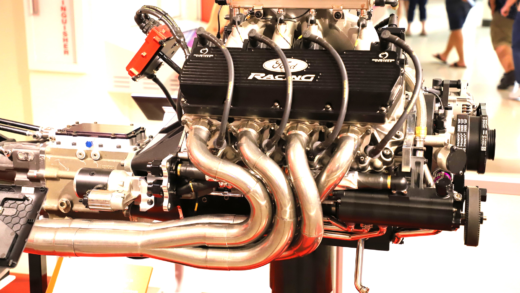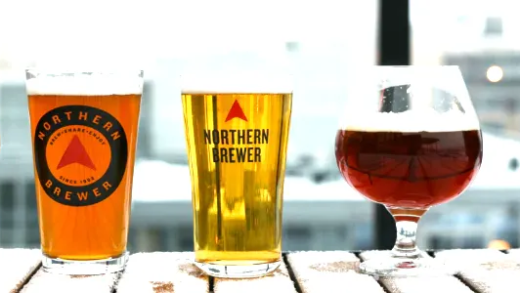Converting wine into biofuel offers significant environmental benefits, reduces waste, and supports local economies. However, challenges include variability in wine quality, equipment costs, regulatory hurdles, and competition from other biofuels. Alcohol content is crucial for efficiency, as higher levels lead to better ethanol yields, but excessive alcohol can inhibit yeast activity. Essential equipment includes fermentation tanks, distillation units, and storage containers, all vital for successful production.
The Conversion Process: Understanding How It Works
Wine biofuel conversion is an innovative process that transforms wine into a renewable energy source. This conversion involves several key steps, primarily focusing on the fermentation of the wine and its subsequent processing into fuel. The first stage is the collection of leftover wine or grape must, which often contains high levels of sugars and alcohol. These are essential components in the biofuel production process.
Once the wine is gathered, it undergoes a fermentation process where yeast converts the sugars into ethanol. This ethanol is the primary alcohol used in biofuels. After fermentation, the mixture is distilled to separate the ethanol from the remaining components, resulting in a concentrated alcohol solution. This process is crucial, as higher ethanol concentrations are necessary for effective fuel production.
In summary, the conversion of wine into biofuel entails collecting leftover wine, fermenting it to produce ethanol, and then distilling it to obtain a usable fuel form. This process not only offers an alternative energy source but also minimizes waste from the wine industry.
Key Ingredients: What You Need for the Transformation
To successfully convert wine into biofuel, specific ingredients and equipment are essential. The primary ingredient is, of course, the wine itself, particularly those that are past their prime or surplus from production. Additionally, the following components are crucial:
- Yeast: This microorganism plays a vital role in fermentation, converting sugars in wine into ethanol.
- Water: Depending on the concentration of the initial wine, water may be necessary to adjust the fermentation process.
- Nutrients: Yeast requires nutrients to thrive, and adding nitrogen can enhance fermentation efficiency.
- Equipment: Essential tools include fermentation tanks, distillation units, and storage containers for the final biofuel product.
It’s important to note that the quality of the wine can influence the efficiency of the conversion process. Higher sugar content typically results in a better yield of ethanol. In conclusion, the key ingredients for transforming wine into biofuel include the wine itself, yeast, water, nutrients, and the right equipment. Proper preparation and selection of these ingredients can significantly impact the outcome of the biofuel production.
Fermentation’s Role: Why It Matters in Fuel Production
Fermentation is a critical stage in the process of converting wine into fuel. During this phase, yeast breaks down the sugars present in the wine, producing ethanol and carbon dioxide. This transformation is not only essential for generating alcohol but also for determining the efficiency of the entire conversion process.
The type of yeast used can affect the fermentation speed and the amount of ethanol produced. Different strains have varying tolerances to alcohol levels, which can influence the final output. For example, some yeasts can thrive in high-alcohol environments, making them ideal for wine biofuel conversion.
Furthermore, fermentation conditions, such as temperature and pH levels, play significant roles in the process. Maintaining optimal conditions ensures that yeast remains active and effective in converting sugars to ethanol. In summary, fermentation is the backbone of wine biofuel production, as it directly impacts the yield and quality of the final fuel product.
Different Methods: Exploring Ways to Convert Wine into Biofuel
Converting wine into biofuel can be achieved through various methods, each with its own unique processes and outcomes. Here are some of the most common approaches:
- Direct Fermentation: This method involves fermenting the leftover wine directly to produce ethanol. Yeast breaks down the sugars, resulting in ethanol production without additional processing.
- Distillation: After fermentation, distillation is used to separate ethanol from the liquid. This method enhances purity and concentration, making it suitable for fuel applications.
- Microbial Fuel Cells: This innovative approach utilizes microbes to convert organic compounds in wine into electricity and biofuel. It’s a less common but fascinating method.
- Enzymatic Hydrolysis: This technique involves breaking down complex sugars into simpler sugars using enzymes, which can then be fermented into ethanol.
Each method has its advantages and challenges. For instance, direct fermentation is straightforward but may yield lower ethanol concentrations. On the other hand, distillation requires more equipment but results in higher purity fuel. Understanding these methods can help in selecting the right approach based on available resources and desired outcomes.
Types of Fuel: What Can You Make from Wine?
Wine biofuel conversion can produce several types of fuel, primarily ethanol, which is the most common and widely used biofuel derived from wine. Here’s a breakdown of potential fuel types:
- Ethanol: The primary product, ethanol can be used as a fuel additive or in flexible fuel vehicles, enhancing octane ratings and reducing emissions.
- Biogas: During fermentation, carbon dioxide is produced, which can be captured and utilized to generate biogas, a renewable energy source for heating or electricity.
- Acetic Acid: While not a fuel, acetic acid can be produced during the fermentation process and used in various industrial applications.
Each type of fuel serves different purposes and markets, with ethanol being the most applicable for transportation and energy production. The versatility of wine in producing these fuels highlights its potential as a sustainable energy resource.
Efficiency of the Process: How Well Does It Work?
The efficiency of converting wine into biofuel largely depends on the methods used and the quality of the wine. Factors influencing efficiency include:
- Alcohol Content: Higher alcohol content in the wine typically leads to better yields of ethanol, making the conversion process more efficient.
- Fermentation Time: Optimizing fermentation duration can significantly impact the quantity of ethanol produced.
- Yeast Strain: Selecting the right yeast strain can enhance fermentation speed and ethanol yield.
On average, the conversion efficiency can vary, but studies suggest that up to 10-15% of the wine’s volume can be converted into ethanol. This efficiency can be improved through careful selection of ingredients and methods, making wine biofuel conversion a viable option for sustainable energy production.
Environmental Benefits: Why This Conversion is Good for the Planet
Converting wine into biofuel offers several environmental benefits that contribute to a more sustainable energy landscape. First and foremost, this process helps reduce waste in the wine industry. Instead of discarding leftover wine and grape must, converting these byproducts into fuel means less waste in landfills and lower environmental impact.
Additionally, wine biofuel has a lower carbon footprint compared to fossil fuels. When burned, biofuels emit significantly less carbon dioxide, which can help mitigate climate change. Furthermore, the production of biofuels from wine utilizes renewable resources, promoting sustainability. By harnessing what would otherwise be waste, we create a circular economy that reduces reliance on non-renewable energy sources.
Moreover, using wine for biofuel production can foster local economies. It creates new job opportunities in the biofuel sector and supports local wine producers by providing them with an alternative revenue stream. In summary, converting wine into biofuel not only minimizes waste but also promotes environmental sustainability and economic growth.
Challenges and Limitations: What to Watch Out For
While converting wine into biofuel is promising, several challenges and limitations must be considered. One primary challenge is the variability in wine quality. The sugar content and overall composition of leftover wine can differ significantly, affecting ethanol yield and quality. This inconsistency can make it difficult to predict the efficiency of the conversion process.
Another issue is the equipment required for the conversion. Setting up fermentation tanks and distillation units can be costly and may not be feasible for small-scale producers. Additionally, regulatory hurdles may arise, as biofuel production is subject to various environmental and safety regulations that can complicate the process.
Moreover, competition from other biofuel sources, such as corn or sugarcane, can impact the viability of wine as a biofuel feedstock. Lastly, public awareness and acceptance of biofuels from unconventional sources like wine remain low, which can hinder market growth. Thus, while converting wine into biofuel is an innovative solution, it’s essential to navigate these challenges for successful implementation.
Alcohol Content: How It Affects Fuel Production
Alcohol content plays a crucial role in the efficiency of converting wine into biofuel. Higher alcohol levels in the wine generally lead to better yields of ethanol during fermentation. This is because the sugars present in the wine are more readily available for conversion by yeast, resulting in a more efficient fermentation process.
However, there is a threshold. If the alcohol content is too high, it can inhibit yeast activity, slowing down fermentation. Therefore, finding the right balance is essential for maximizing ethanol production. Monitoring the fermentation conditions, such as temperature and pH, can help maintain an optimal environment for yeast to thrive.
In conclusion, understanding the impact of alcohol content on fuel production is vital for optimizing the conversion process. By selecting wines with appropriate alcohol levels and managing fermentation conditions, producers can enhance the efficiency of wine biofuel conversion.
Required Equipment: What You Need to Get Started
To successfully convert wine into biofuel, specific equipment is necessary. Here’s a list of essential tools:
- Fermentation Tanks: These are crucial for the fermentation process, allowing yeast to convert sugars into ethanol.
- Distillation Unit: This equipment separates ethanol from the fermented mixture, increasing purity and concentration for fuel use.
- Storage Containers: Proper storage is necessary for the final biofuel product to prevent contamination and ensure quality.
- Hydrometers: These devices measure the specific gravity of the liquid, helping to assess sugar content and fermentation progress.
- Heating Elements: Maintaining optimal temperatures during fermentation can enhance yeast activity and improve ethanol yields.
Investing in the right equipment is crucial for maximizing the efficiency of wine biofuel conversion. With proper tools, producers can optimize each stage of the process, from fermentation to distillation, resulting in a successful biofuel production operation.





Comments are closed.